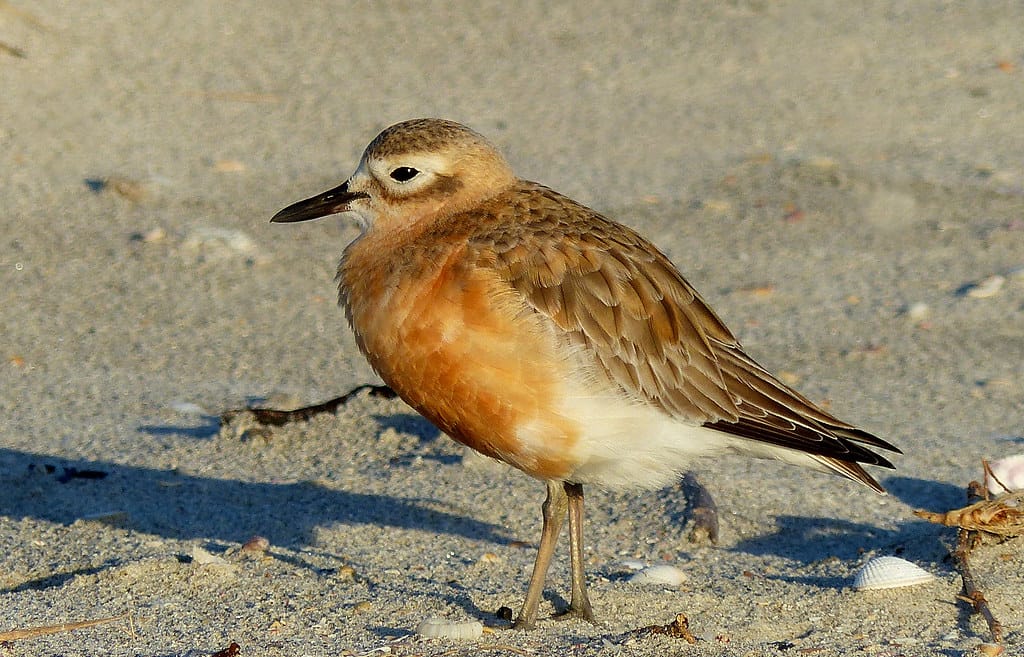Peter Jackson Backs Ambitious Plan to Resurrect New Zealand's Giant Moa Birds
The Lord of the Rings director has thrown his support behind a controversial de-extinction project that could see the towering moa—some standing 12 feet tall—roaming New Zealand's landscapes once again.
Peter Jackson, the Academy Award-winning filmmaker behind The Lord of the Rings trilogy, has emerged as an unexpected champion of one of conservation's most audacious endeavors: bringing back New Zealand's extinct moa birds through cutting-edge genetic technology. The director's backing of this "long shot" de-extinction plan has thrust the project into the international spotlight, raising both excitement and skepticism about the feasibility of resurrecting creatures that vanished centuries ago.
The Moa: New Zealand's Lost Giants
The moa were a family of flightless birds that once dominated New Zealand's ecosystems, with nine species ranging from turkey-sized to towering giants reaching 12 feet in height and weighing up to 510 pounds. These magnificent creatures, which had no natural predators for millions of years, were driven to extinction by the early 14th century following the arrival of Polynesian settlers.
"The moa were New Zealand's ecological engineers," explains Dr. Sarah Mitchell, a paleontologist at the University of Auckland. "They shaped entire forest ecosystems through their feeding patterns and seed dispersal. Their loss created a void that has never been filled."
Recent archaeological evidence suggests that at least 58,000 moa roamed New Zealand's North and South Islands at the time of human arrival, making their rapid extinction within just 200 years one of the most dramatic megafauna collapses in recorded history.
Jackson's Vision: From Middle-earth to Real Earth
Jackson's interest in the moa project stems from his deep connection to New Zealand's natural heritage and his fascination with bringing extinct worlds to life—a skill he honed creating Middle-earth's fantastical creatures. The director has reportedly committed significant funding to the research initiative, though exact figures remain undisclosed.
"Peter sees this as the ultimate special effect," says Dr. Tom Higgins, lead researcher on the project. "But unlike CGI, this would be real, breathing animals walking in New Zealand forests again."
The filmmaker's involvement has attracted additional private investors and has prompted the New Zealand government to establish a $2.3 million research fund to explore the scientific and ethical implications of moa de-extinction.
The Science Behind the Resurrection
The de-extinction effort relies on advances in CRISPR gene editing technology and synthetic biology. Scientists have successfully extracted DNA from moa bones and eggshells preserved in New Zealand's caves and archaeological sites. The plan involves using the closest living relative—the tinamou, a South American ground bird—as a genetic template.
However, the challenges are immense. Moa DNA is highly fragmented after 600 years, with researchers recovering only about 15% of the complete genome. The team must essentially rebuild the genetic code using computational models and comparative genomics from related species.
"We're not just copying and pasting genes," explains Dr. Lisa Chen, the project's chief geneticist. "We're reconstructing an entire evolutionary history and hoping we get it right."
Conservation Controversy
The moa project has divided the scientific community. Supporters argue that de-extinction could restore ecological balance and inspire conservation efforts, while critics contend that resources would be better spent protecting currently endangered species.
New Zealand is home to 4,000 native species, with 1,000 currently threatened with extinction. The country spends approximately $70 million annually on conservation efforts, leading some to question the wisdom of investing in species that have been extinct for centuries.
"Every dollar spent on moa could save ten kiwi birds," argues Dr. Rachel Foster from the New Zealand Conservation Foundation. "We're fighting a romantic fantasy while real species disappear."
The Road Ahead
Despite the controversy, the moa project continues to advance. The research team expects to produce their first genetically modified embryos within three years, with the possibility of live births by 2030. Success would make the moa the largest animal ever brought back from extinction, dwarfing previous de-extinction efforts focused on species like the passenger pigeon and woolly mammoth.
Jackson's involvement has transformed what was once a fringe scientific endeavor into a serious research initiative with international implications. Whether the moa will once again stride through New Zealand's forests remains to be seen, but the director's backing has ensured that this extraordinary project will be pursued with the same meticulous attention to detail that brought hobbits and dragons to life on the silver screen.
The intersection of Hollywood ambition and cutting-edge science may just be the key to unlocking one of conservation's greatest prizes—or its most expensive folly.

